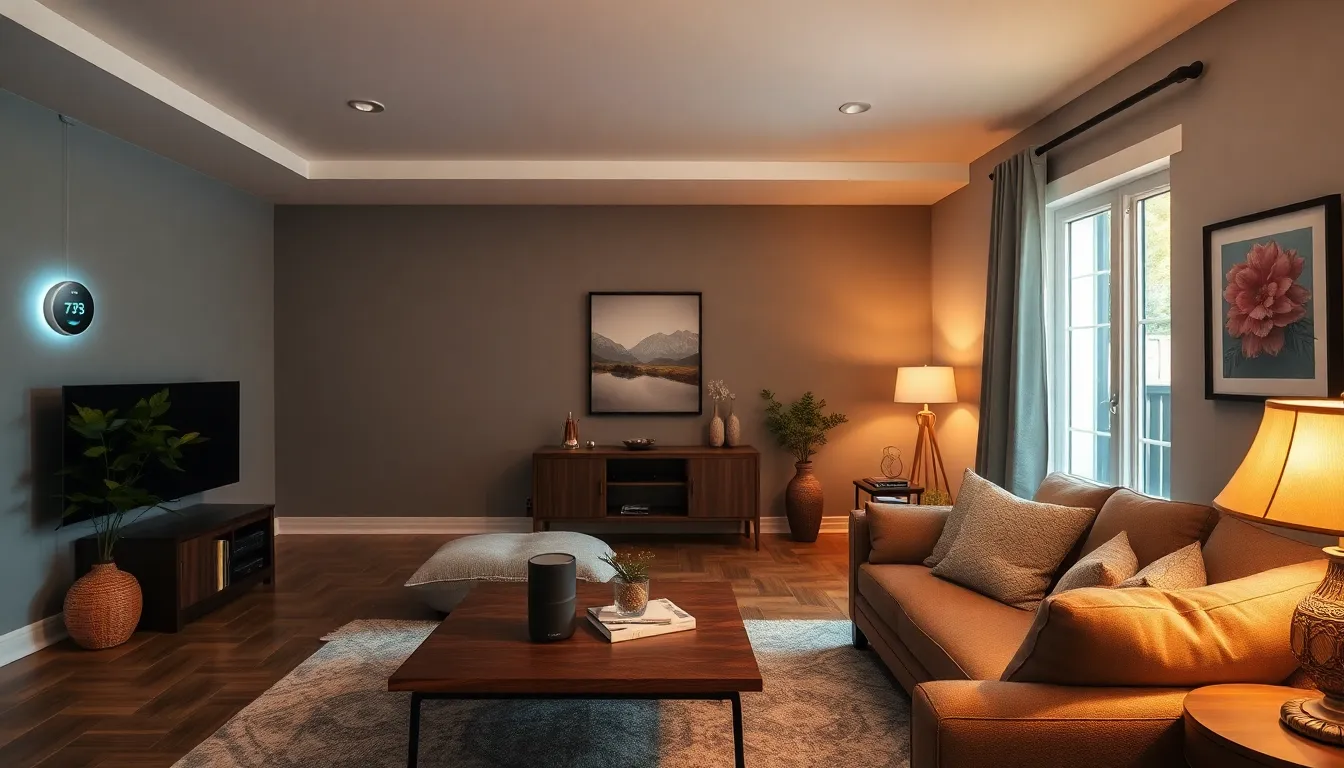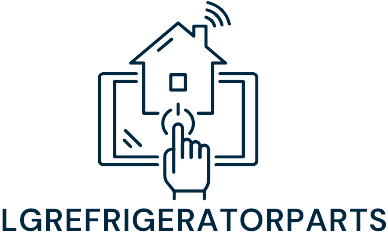Table of Contents
ToggleImagine walking into your home and having it greet you like an old friend. Smart home integration makes this dream a reality, turning everyday spaces into tech-savvy havens. From adjusting the thermostat with a simple voice command to dimming the lights for movie night, smart devices are here to make life easier and a bit more fun.
But let’s be real—who wouldn’t want a home that can whip up a playlist or remind them to water the plants? With the right setup, your house can transform into a personal assistant, a security guard, and even a DJ. Dive into the world of smart home integration and discover how it can elevate your living experience while saving you time and energy, all with a sprinkle of humor and a dash of convenience.
Overview of Smart Home Integration
Smart home integration revolutionizes daily living by intertwining technology with household functions. This approach creates an environment that optimizes comfort, efficiency, and security.
Definition and Importance
Smart home integration refers to the seamless connectivity of devices within a home, allowing for centralized control and automation. This concept enhances user experience by providing convenience through features such as remote operation. Importance lies in its ability to improve energy efficiency, streamline daily tasks, and enhance safety measures. With integrations, users can monitor energy consumption and adjust settings to reduce waste. Security systems benefit from automation by providing real-time alerts and remote access. Overall, smart home integration creates a more connected, responsive living space.
Key Components
Key components of smart home integration include devices and technologies that facilitate communication and automation. Smart speakers serve as hubs, enabling voice commands to manage various systems. Smart lights, thermostats, and locks contribute to energy efficiency and security. Sensors for motion, temperature, and smoke detection enhance safety measures significantly. Wireless protocols like Wi-Fi, Zigbee, and Z-Wave ensure compatibility between devices. The combination of these elements allows for comprehensive smart home functionality. Together, they provide a cohesive experience that simplifies daily routines and improves overall quality of life.
Benefits of Smart Home Integration


Smart home integration offers substantial advantages that improve everyday life and enhance living environments. The convenience, energy efficiency, and security provided through interconnected devices streamline daily tasks and contribute to a more comfortable home.
Increased Convenience
Increased convenience stands out as a primary benefit of smart home integration. Homeowners control devices like lights, thermostats, and locks through voice commands or mobile apps. Schedules for devices can automate daily routines, such as having lights turn on at certain times or adjusting the temperature before arriving home. Additionally, smart home systems send notifications, enabling users to monitor their homes remotely. A single app can manage multiple devices, eliminating various controls and simplifying interactions. By integrating devices, managing daily tasks becomes seamless and efficient.
Energy Efficiency
Energy efficiency is another key benefit of smart home integration. Devices optimize energy consumption based on usage patterns and preferences. Smart thermostats learn from user behaviors to adjust heating and cooling schedules, reducing unnecessary energy use. Energy monitoring systems track consumption, helping users identify high-usage appliances and implement cost-effective strategies. By utilizing smart lighting, users can schedule when lights are on, minimizing electricity bills. The cumulative effect of these technologies results in significant savings and a reduced carbon footprint for households.
Challenges in Smart Home Integration
Smart home integration faces multiple challenges that can impact user experience and functionality. Compatibility issues and security concerns stand out as two major hurdles.
Compatibility Issues
Devices from different manufacturers often struggle to communicate effectively. Many smart devices rely on varying wireless protocols, creating inconsistencies in operation. Certain systems may require specific hubs or apps, complicating the setup for homeowners. Users frequently encounter difficulty in managing devices from different brands under one unified platform. A lack of standardization in smart technology increases this complexity. Smart home enthusiasts must research compatibility before investing, ensuring seamless integration among their devices.
Security Concerns
Security represents a significant challenge within smart homes. Connected devices may introduce vulnerabilities, potentially exposing personal data to cyber threats. Hackers often exploit weak passwords and outdated firmware, compromising device safety. Users sometimes neglect regular updates, inadvertently leaving their systems open to attacks. Strong security measures, such as two-factor authentication and strong encryption, become essential for protecting sensitive information. Awareness of security risks can help homeowners make informed decisions about their smart technology investments.
Popular Smart Home Devices
Smart home devices enhance convenience and efficiency. These products integrate seamlessly into daily life, simplifying tasks while providing advanced control options.
Smart Speakers
Smart speakers serve as central hubs for voice command functionality. They enable homeowners to control various connected devices, from lights to thermostats, using simple voice instructions. Additionally, popular models like Amazon Echo and Google Nest assist with answering questions, playing music, and providing updates on weather or news. Compatibility with numerous smart devices allows users to create custom routines, enhancing the overall experience. Many smart speakers also support multi-room audio, making it easy to enjoy music throughout the home. Their user-friendly interfaces ensure that individuals of all ages can interact with technology effortlessly.
Smart Thermostats
Smart thermostats optimize energy consumption and improve home comfort. They learn user preferences over time, automatically adjusting temperature settings based on schedules and habits. Popular models such as Nest and Ecobee feature remote access via mobile apps, allowing homeowners to monitor and control heating and cooling systems from anywhere. Additionally, these devices provide energy usage reports, helping users identify opportunities for savings. Integrating with smart home systems, they can adjust settings based on occupancy or weather conditions. These features contribute to a more efficient and comfortable living space, minimizing energy bills and enhancing overall home management.
Future Trends in Smart Home Integration
Anticipated trends in smart home integration signal a shift toward advanced technologies that enhance user experience and connectivity. Emerging innovations will shape how homes operate and how users interact with their devices.
AI and Automation
Artificial intelligence continues to play a critical role in smart home integration, enabling devices to learn user preferences. Automation simplifies daily tasks through predictive algorithms. Smart assistants will adjust home settings based on behavioral data, creating personalized environments. Homeowners benefit from increased convenience and energy efficiency as devices optimize usage patterns. Real-time data analysis will lead to more precise control, enhancing user satisfaction while saving time and resources.
Enhanced Interoperability
Interoperability among devices is crucial for a seamless smart home experience. Future advancements will focus on creating standards that promote compatibility across various brands. Manufacturers are likely to collaborate, reducing communication barriers between devices. Unified platforms will allow users to manage multiple devices effortlessly, fostering convenience and enhancing security. Efficient interoperability significantly maximizes the performance of smart technologies, allowing homeowners to benefit from a cohesive, integrated living environment.
Smart home integration offers a transformative approach to modern living. By seamlessly connecting devices homeowners can enjoy enhanced convenience and efficiency in their daily routines. The ability to control everything from lighting to security systems with just a voice command or a tap on a smartphone makes life simpler and more enjoyable.
While challenges like compatibility and security must be addressed smart technology continues to evolve. The future promises even greater advancements with artificial intelligence leading the way in creating personalized and responsive environments. As smart home integration becomes more accessible and user-friendly it’s clear that the benefits will only continue to grow. Embracing this technology not only enhances comfort but also supports a more sustainable lifestyle.



